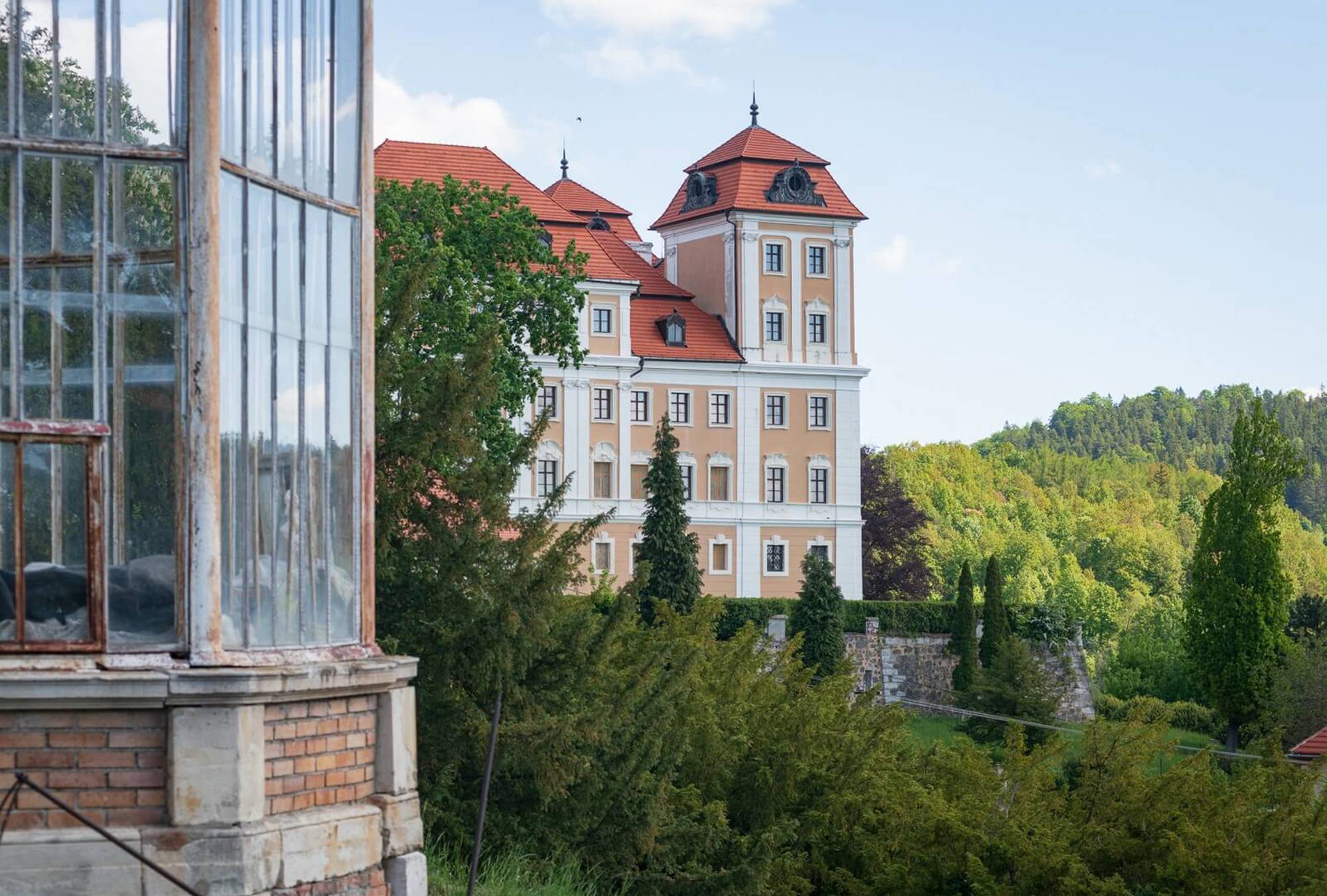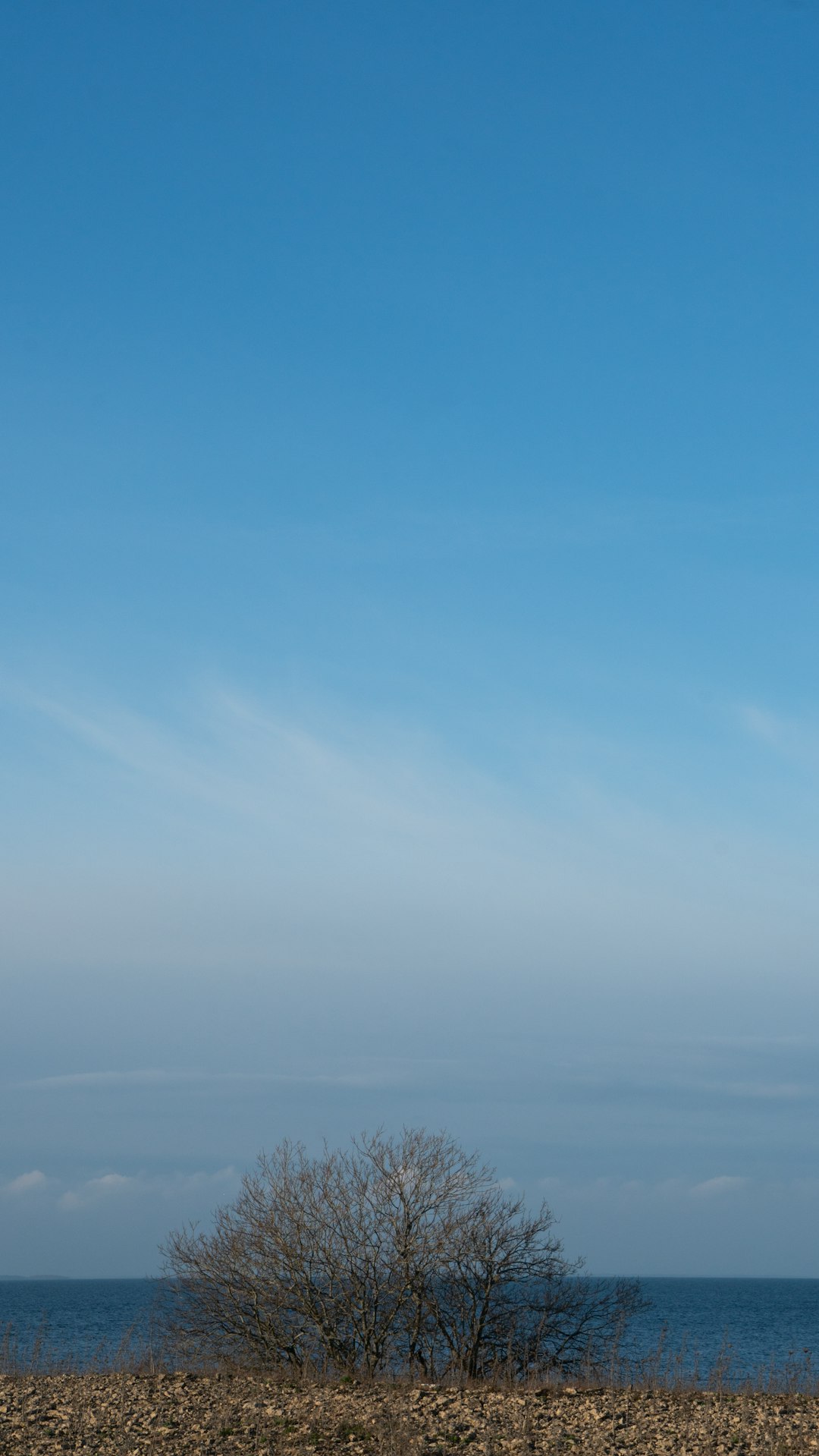Valeč Chateau, in the Karlovy Vary region, is located in a fifteen-hectare complex together with eight other film-friendly buildings. In addition to the chateau building itself, there is a church, an administrative building, a smithy, a summer house, a carriage house, a laundry building, a theatron, and a greenhouse. The extensive park is home to a series of sculptures from the workshop of Matthias Bernard Braun, a fountain, and an illusory gateway. The complex offers many opportunities for filmmakers to bring their ideas to life.
24. September 2020


Valeč | Photo: Czech Film Commission
The Baroque chateau, situated at the edge of the mysterious Doupov Mountains, has a remarkable history. Originally a Gothic castle, it was rebuilt during the Renaissance, and subsequently in the 18th century in Baroque style. It was confiscated in 1945 under the Beneš Decrees, briefly served as a sanatorium for veterans, and in the 1950s it became a refuge for children affected by the war between North and South Korea. Subsequently, it functioned as a children's home until a devastating fire in 1976. Restoration of the chateau continues to this day.
The chateau itself has 80 rooms. The largest are the restored Braun Hall, with an area of 95 m2 and a height of 3.6 m, and a hall one floor higher with an area of 133 m2 and a height of 3.8 m. Approximately 50 rooms are open for use in other buildings in the complex.
The Baroque Church of the Holy Trinity was built from 1722 to 1728 according to plans by the Italian architect Giovanni Antonio Bianno Rossa. After 1945, the church ceased to serve its religious purpose, gradually fell into disrepair, and became the target of vandals and thieves. Not far from the church stands the Holy Trinity Column, designed by the famous architect František Maxmilián Kaňka and created in the workshop of the equally famous sculptor Matthias Bernard Braun. From 2009 to 2011, a costly complete reconstruction of the dilapidated church and column took place.
One of the most interesting buildings in terms of filmmaking is undoubtedly the originally Baroque summer house, rebuilt in the 19th century in a historicist style and supplemented by a lookout tower, terrace, and a balcony. On its ground floor there is a hall with a large fireplace and ceiling paintings depicting the four seasons. The vaulted cellars in the basement are accessible by the tower's spiral staircase as well as at ground level.
The gardens and greenhouses were established during the Baroque period - the greenhouses were originally made of wood. The current cast steel construction dates back to the end of the 19th century. The entire structure was made in Vienna, from where it was brought to Valeč in 1894 by the then owner, Count Vincenc Thurn-Valsassina.
The theatron is the original term for the auditorium of an ancient theater. According to recent findings, the theatron here originated during the Baroque period. The individual steps were fitted with parts of the original park decoration. In the past, the theatron served as a backdrop for theatrical and musical performances to entertain the manor, horse tournaments were held here, and the space also served as a wrestling ground.
Underground spaces can also be found in the complex. The original purpose of the labyrinth of cellars is not yet clear. From archival sources, we know only about the secondary use of the cellars for the now defunct Valeč brewery, which ceased operations in 1931. At present, the cellars are a refuge for twelve endangered species of bats.
The chateau gardens are home to a series of sculptures from the workshop of Matthias Bernard Braun and his nephew Antonín representing allegories of human qualities and figures of Greek mythology. The originals of all 28 statues can be found in the Valeč lapidary, formerly the chateau stables.
The renovated hall in the administrative building with an area of 160 m2, fully equipped with a kitchen, furniture, data projector and large-capacity toilets, makes an ideal base camp. Cars can be parked on the town’s football pitch adjacent to the chateau complex. There is space for 20 cars at the administration building and in front of the chateau. There is also accommodation for 15 people directly on the premises.
Electricity is installed in all buildings; it can also be extended to the theatron and the illusory gateway.
"This Baroque chateau and its remarkable history is a true pearl of the Doupov Mountains. It has an amazing atmosphere generated by the chateau gardens and the historical greenhouse and an extensive series of sculptures depicting human qualities from the workshop of Matthias Bernard Braun," explains Petr Židlický of the Karlovy Vary Film Offices on why he recommends Valeč Chateau to filmmakers.
The caretaker of Valeč Chateau, Tomáš Petr, adds: "We welcome filmmakers especially now during the renovation phase of the complex. A number of buildings have not yet been repaired and tourist traffic is still developing. These are ideal conditions for filmmakers, as unrepaired buildings are often more interesting for filming than those that have been completely restored."
The chateau's surroundings will certainly also catch the eye of filmmakers. A walk along the restored Baroque Stations of the Cross leads to Calvary Hill, where a beautiful view awaits. Continue the walk to the Jinotaj lookout and the Neuhaus ruins.
Contact for filming in the Karlovy Vary Region:
Petr Židlický, zidlicky@zivykraj.cz, +420 736 650 129
















